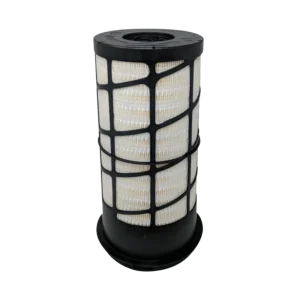Fire-resistant landscaping is a crucial aspect of protecting your property from the devastating effects of wildfires. By strategically planning and designing your landscape to resist the spread of fire, you can significantly reduce the risk of damage to your home and surrounding vegetation. This type of landscaping involves selecting fire-resistant plants, creating defensible space, and using non-combustible hardscaping materials to minimize the potential fuel for wildfires.
Implementing fire-resistant landscaping not only safeguards your property but also contributes to the overall community’s wildfire resilience. In regions prone to wildfires, the importance of fire-resistant landscaping cannot be overstated. By incorporating fire-resistant elements into your landscape design, you are not only protecting your property but also aiding in the broader effort to mitigate the impact of wildfires.
Understanding the principles of fire-resistant landscaping and its role in wildfire prevention is essential for homeowners and communities in high-risk areas. With proper planning and implementation, fire-resistant landscaping can serve as a critical line of defense against the destructive force of wildfires.
Key Takeaways
- Fire-resistant landscaping is crucial for protecting your property from wildfires.
- Choose fire-resistant plants and trees for your property to reduce the risk of fire spreading.
- Create defensible space around your home by removing flammable materials and maintaining a clear area.
- Use fire-resistant hardscaping and building materials to further protect your property.
- Regular maintenance of your fire-resistant landscape is essential for its effectiveness in wildfire protection.
Choosing Fire-Resistant Plants and Trees for Your Property
Characteristics of Fire-Resistant Plants
Native plants that have evolved to thrive in fire-prone ecosystems are often excellent choices for fire-resistant landscaping. These plants have adapted to survive in environments where fires are common, making them more resistant to ignition and less likely to contribute to the spread of wildfires.
Examples of Fire-Resistant Plants
Examples of fire-resistant plants include succulents, aloe vera, agave, and certain species of grasses that are less likely to ignite and contribute to the spread of wildfires.
Proper Plant Spacing and Arrangement
In addition to selecting fire-resistant plants, it is crucial to consider the spacing and arrangement of vegetation to minimize the potential for fire spread. Properly spacing trees and shrubs can prevent flames from easily reaching your home and reduce the risk of fire jumping from one plant to another. By carefully curating your plant selection and layout, you can create a more resilient landscape that is better equipped to withstand the threat of wildfires.
Creating Defensible Space Around Your Home
Creating defensible space around your home is a key component of fire-resistant landscaping. Defensible space refers to the area surrounding a structure that has been strategically designed and maintained to reduce the risk of wildfire damage. This involves clearing flammable vegetation, maintaining adequate spacing between plants, and implementing fire-safe landscaping practices within a certain radius of the home.
By creating defensible space, you provide a buffer zone that can help protect your property from encroaching wildfires. To establish defensible space, it is essential to remove dead or dry vegetation, trim overhanging branches, and maintain a well-irrigated zone around your home. This proactive approach reduces the likelihood of a wildfire reaching your property and provides firefighters with a safer environment in which to defend your home.
Creating defensible space not only enhances the safety of your property but also contributes to the overall wildfire resilience of your community.
Implementing Fire-Resistant Hardscaping and Building Materials
| Material | Fire Rating | Cost |
|---|---|---|
| Fire-resistant concrete | Class A | |
| Fire-resistant bricks | Class A | |
| Fire-resistant roofing tiles | Class A | |
| Fire-resistant exterior paint | Class A |
In addition to selecting fire-resistant plants, incorporating fire-resistant hardscaping and building materials is crucial for creating a resilient landscape. Hardscaping elements such as gravel pathways, stone walls, and concrete patios can act as effective firebreaks, helping to prevent the spread of wildfires across your property. When choosing building materials for structures such as decks, fences, and outbuildings, opt for non-combustible materials like metal, concrete, or fire-retardant-treated wood.
By integrating fire-resistant hardscaping and building materials into your landscape design, you can further fortify your property against the threat of wildfires. These elements not only enhance the aesthetic appeal of your outdoor spaces but also serve as practical measures to reduce the potential fuel for fires and protect your home from ignition.
Maintaining a Fire-Resistant Landscape
Maintaining a fire-resistant landscape is an ongoing responsibility that requires regular upkeep and vigilance. This includes routine maintenance tasks such as pruning, weeding, and removing dead vegetation to minimize fuel for potential fires. Regularly inspecting and maintaining irrigation systems is also essential to ensure that plants remain adequately hydrated, especially during dry seasons when the risk of wildfires is heightened.
In addition to vegetation management, maintaining a fire-resistant landscape involves monitoring and addressing any potential hazards that may compromise the resilience of your property. This may include repairing damaged hardscaping elements, clearing debris from gutters and roofs, and ensuring that firewood and other combustible materials are stored at a safe distance from structures. By staying proactive in landscape maintenance, you can uphold the fire-resistant qualities of your property and reduce the vulnerability to wildfires.
Working with Professionals to Design and Implement Fire-Resistant Landscaping
Designing and implementing a comprehensive fire-resistant landscape often requires the expertise of professionals with knowledge of wildfire mitigation strategies and landscape architecture. Collaborating with landscape designers, arborists, and wildfire mitigation specialists can provide valuable insights and guidance in creating a resilient landscape tailored to your specific property and local wildfire risk factors. Professionals can assess your property’s unique characteristics, recommend suitable fire-resistant plants and materials, and develop a customized landscape plan that aligns with wildfire resilience principles.
Their expertise can also ensure that your landscape design complies with local regulations and best practices for wildfire prevention. By working with professionals, you can optimize the effectiveness of your fire-resistant landscaping efforts and enhance the protection of your property against wildfires.
Additional Tips for Protecting Your Property from Wildfires
In addition to implementing fire-resistant landscaping practices, there are several additional tips that can further safeguard your property from wildfires. Installing ember-resistant vents on roofs and attics can help prevent ember intrusion during a wildfire, reducing the risk of internal ignition. Regularly clearing debris from gutters, eaves, and other potential ignition points can also minimize the likelihood of ember ignitions near structures.
Furthermore, creating an emergency evacuation plan and maintaining clear access routes for firefighters can improve overall safety during wildfire events. Staying informed about local wildfire conditions, adhering to burn bans, and participating in community wildfire preparedness efforts are essential components of comprehensive wildfire protection strategies. By combining these additional tips with fire-resistant landscaping measures, you can enhance the resilience of your property and contribute to a more wildfire-resilient community overall.










